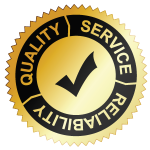
 Plug & Play Hot Tubs
Plug & Play Hot Tubs
Might a plug & play hot tub be a good option for you? Read this through to understand the answer to that question.
240-volt hot tubs
Generally speaking, hot tubs come standard as 240-volt systems and that’s the better way to go if you can swing it.
A 240-volt system needs to be hardwired (i.e., cannot be plugged in), and requires special wiring with a double-wide breaker in your panel and a code usually requires a dedicated subpanel installed near the tub as well. For some people, this may not be an option due to cost, electrical limitations or strata regulation.
Cheap Plug & Play Hot Tubs
Remember those Easy-Bake Ovens? The one my sister had was heated by an incandescent light bulb and she’d make her brothers eat the yucky muffins she’d proudly “baked”. That’s what I think of when I see some of these cheap “plug & play” units. No hot tub repairperson would consider them to be “real hot tubs”.
Some of them work off a heat recovery system using the heat from the pump to warm the water so they take forever to heat up and often cannot maintain max temperature in cold weather. The equipment and electronics are in a sealed unit that can’t be fixed, and parts are not available so they’re basically “disposable”. They are poorly made with cheap materials, don’t perform well and have a short life expectancy. If a hot tub is an important purchase, it would be false economy to go for one of these.
120/240v Convertible Hot Tubs
If you want a “real hot tub” but 240-volts is not an option, you might want to consider a “convertible” model. That means it’s got the same pump/motor/heating element/controls/electronics as a 240-volt hot tub, except you can set it to 120-volt mode. You can either hardwire it to your panel, or attach a cord with a GFCI-equipped plug on it so you can simply plug it in.
What Hot Tubs Are Convertible?
If a hot tub has more than one pump, you’re probably stuck with a 240-volt system. Some single-pump hot tubs come standard as 240-volt systems but we can convert almost all one-pump systems to run off 120-volts. It may require that we do some electrical rewiring and swap out a pump, but it’s almost always possible.
The limitations of a 120-volt system
When you switch a hot tub to 120-volt mode, here are a few drawbacks:
- You’re limited to simpler options. Single pump models tend to be more plain, without a lot of features. If you’re OK with that, then great, because it keeps the cost down and the simpler the hot tub, the less there is to go wrong.
- You can’t go bigger than a 1.5 hp motor. If it’s a small tub with few jets, and/or if strong jet pressure is not of upmost importance, then this shouldn’t bother you – you may not even notice any difference.
- The heater is limited to putting out 1.5KW of power (compare that to a 5.5KW heater of a more substantial hot tub). With the hot tub cover on, the water will still heat up to and maintain max temperature no problem, but the temperature will drop faster while in use in cold weather with the cover off, and will take longer to heat up again.
- When the pump is on the high-speed setting, the heating element kicks off automatically. It will only activate when the pump is on low speed.
Conclusion:
A convertible hot tub set to 120-volt mode should serve you well enough if you’re using the hot tub to relax and hang out for an hour or less in moderate or cool weather. But if you’ve got the jets going full blast in sub-zero temperatures for extended periods of time, the water may begin to cool noticeably by the time you’re done.
If it’s cost that makes you hesitant to install 240v service, you might consider buying a convertible model and run it in 120-volt mode for starters. If it turns out to be “good enough”, you’ve saved yourself some time and money. And if you decide later on to upgrade to 240v service, that’s still an option.






